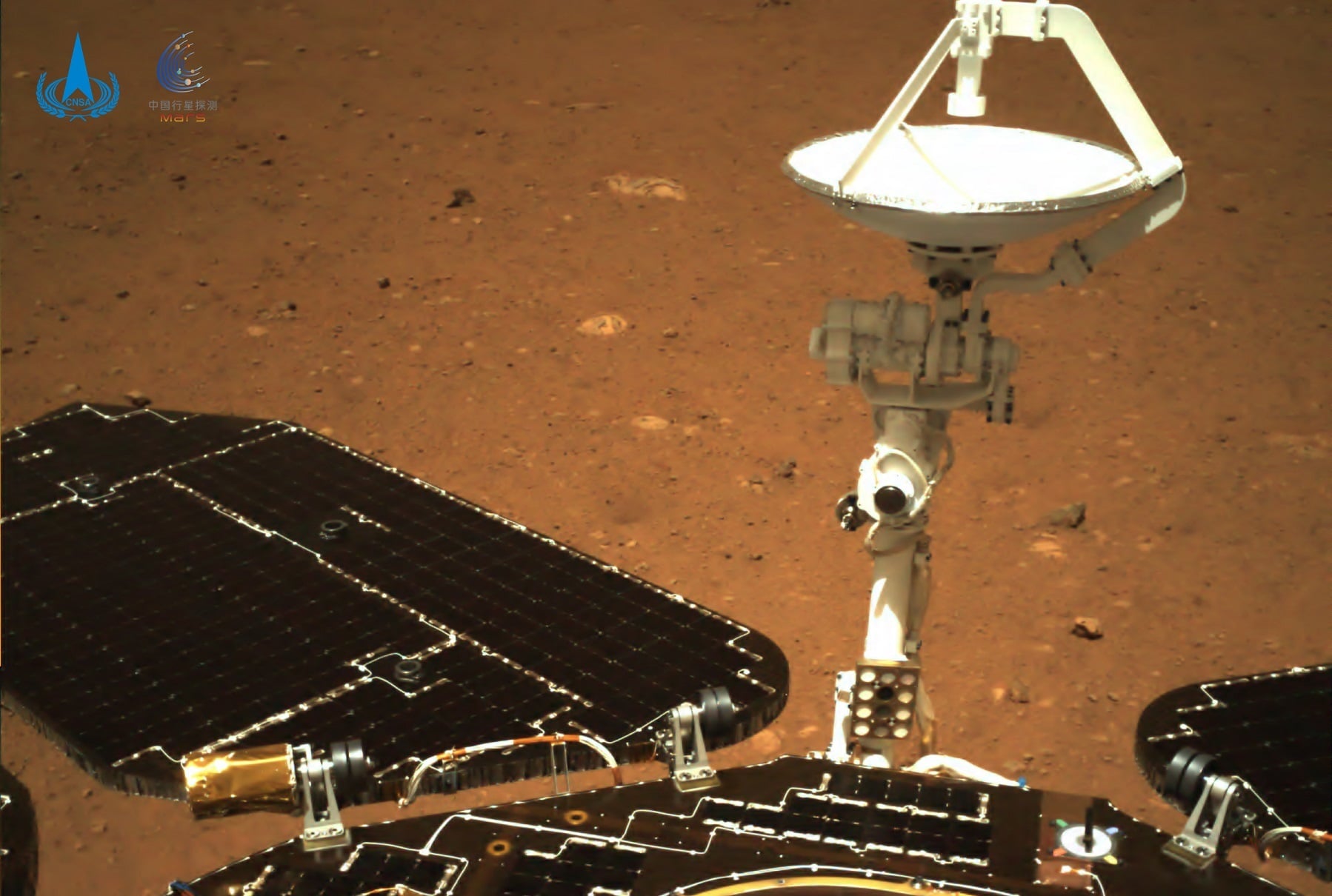The first pictures from a Chinese probe on the surface of Mars were released May 19, sparking a plea from NASA's recently appointed chief for more funding to keep America in the lead on the space frontier.
China's Zhurong rover, which landed on the Red Planet on May 14, sent back pictures as it sat atop its landing platform on the flat plain of Utopia Planitia. One picture provides a rover's-eye view of the ramp that the six-wheeled robot will use to roll down onto the surface.
The probe also sent back video clips that were captured by China's Tianwen-1 orbiter during the lander's separation.
Loading tweet...
— View on Twitter
Loading tweet...
— View on Twitter
Loading tweet...
— View on Twitter
In a statement, NASA Administrator Bill Nelson congratulated the China National Space Administration on the Zhurong rover's pictures.
"As the international scientific community of robotic explorers on Mars grows, the United States and the world look forward to the discoveries Zhurong will make to advance humanity's knowledge of the Red Planet," said Nelson, a former U.S. senator who was sworn in as NASA's chief two weeks ago. "I look forward to future international discoveries, which will help inform and develop the capabilities needed to land human boots on Mars."
NASA has been sending rovers to Mars since 1997 and currently has two Red Planet rovers in operation: Curiosity, which landed in 2012; and Perseverance, which arrived in February. Each of those machines is twice as big as China's Zhurong rover.
Nelson's statement may have sounded collegial toward China, but during a House subcommittee budget hearing, he warned lawmakers that China was "a very aggressive competitor" in space exploration. Nelson said China's space successes should spark concern about funding levels for NASA's Artemis program, which aims to send astronauts to the moon by the mid-2020s and then onward to Mars.
The administrator pointed to China's plans to send future landers to the moon's polar regions, which are thought to hold deposits of water ice. Such deposits could be converted into rocket fuel as well as drinkable water and breathable air for future lunar residents. That's why China — and NASA — are targeting the lunar south polar region for robotic missions and eventually human exploration.
In March, China and Russia announced that they would work together to create an international research station near the moon's south pole.
China's success on Mars, and its aspirations for future moon missions, are "adding a new element as to whether or not we want to get serious and get a lot of activity going in landing humans back on the surface of the moon," Nelson said.
"They're going to be landing humans on the moon," Nelson said of the Chinese. "That should tell us something about our need to get off our duff and get our human landing system going vigorously."
Loading tweet...
— View on Twitter
NASA's Human Landing System program is currently a point of contention. The space agency had organized a three-way competition for lunar lander proposals, with the intention of choosing two companies to go to the next phase. But Congress allocated only a fraction of the money that NASA requested for the current fiscal year. As a result, NASA picked SpaceX's Starship as its sole selection.
The other two competitors — Dynetics, and a team led by Amazon founder Jeff Bezos' Blue Origin space venture — have protested NASA's decision. It's up to the Government Accountability Office to decide whether the competition will have to be redone.
In the meantime, Congress is considering legislation that would require NASA to pick a second provider for lunar landers, in order to promote competition and provide redundancy. Nelson called on Congress to set aside $5.4 billion in its infrastructure and jobs bill to boost the lander program and address NASA's other infrastructure needs.
Even if NASA's award to SpaceX remains as is, Nelson pledged that the space agency would conduct a follow-up competition for commercial lunar landing services that'd come into play after the Artemis program's astronauts make their first moon landing. "Within the bounds of law, I will insist on that future competition," he said.
*Lead photo: An image from China's Zhurong rover shows spacecraft hardware in the foreground and Martian terrain in the background. Credit: CNSA via Twitter / Cosmic_Penguin*
A version of this story was originally published on Cosmic Log.
 Universe Today
Universe Today
